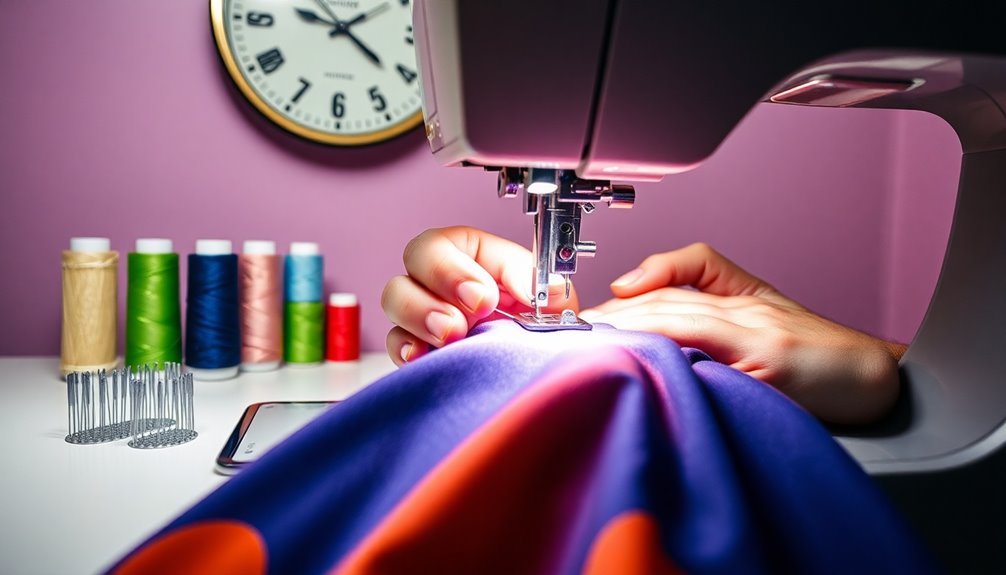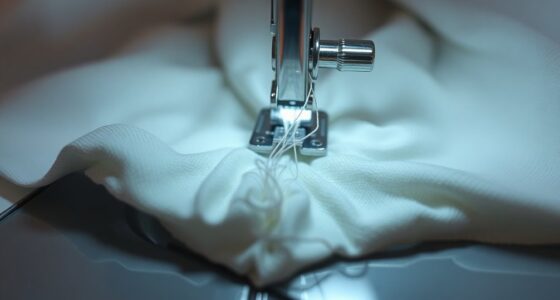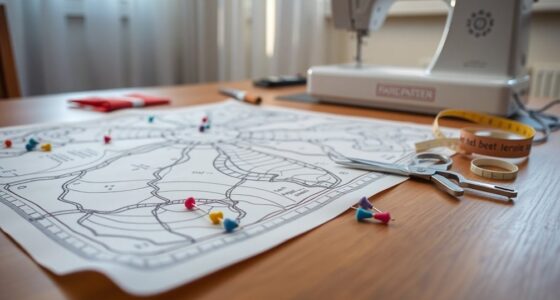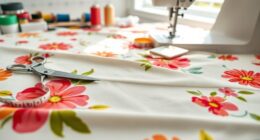Sewing a dress usually takes you anywhere from 6 to 12 hours. It all depends on your skill level, the fabric you choose, and how complex the design is. Beginners might find themselves spending more time on simpler projects, while experienced sewers can whip up intricate designs in just a few hours. Keep in mind that mistakes and distractions can add to your total time. There's a lot more to discover about making the process smoother.
Key Takeaways
- Sewing a simple dress typically takes around 12 hours, while beginners may require 6 to 10 hours for straightforward designs.
- Experienced sewers can complete similar dresses in just 3 to 4 hours, with intricate projects taking 1 to 2 days.
- Complexity of the pattern and fabric choice significantly influence the overall sewing time.
- Mistakes requiring unpicking or distractions during sewing can add considerable time to the project.
- Attention to detail and experience level are crucial factors that affect sewing speed and the final appearance.
Understanding the Sewing Process
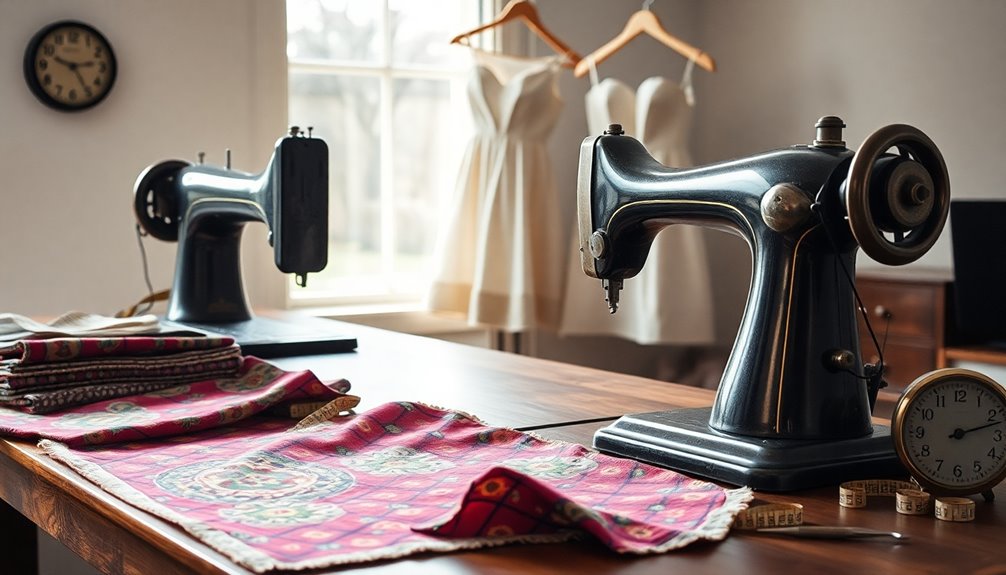
When you plunge into the sewing process, it's important to recognize that the time it takes to sew a dress can vary widely.
On average, a simple dress might take around 12 hours, not counting the hour or so needed for laying out the pattern and cutting fabric.
Using your sewing machine efficiently can make a significant difference, but don't forget to factor in time for unpicking mistakes and pressing seams. These essential steps guarantee a polished final look.
Your experience will also influence your speed; as you sew more dresses, you'll find you become quicker and more adept.
Factors Affecting Sewing Time
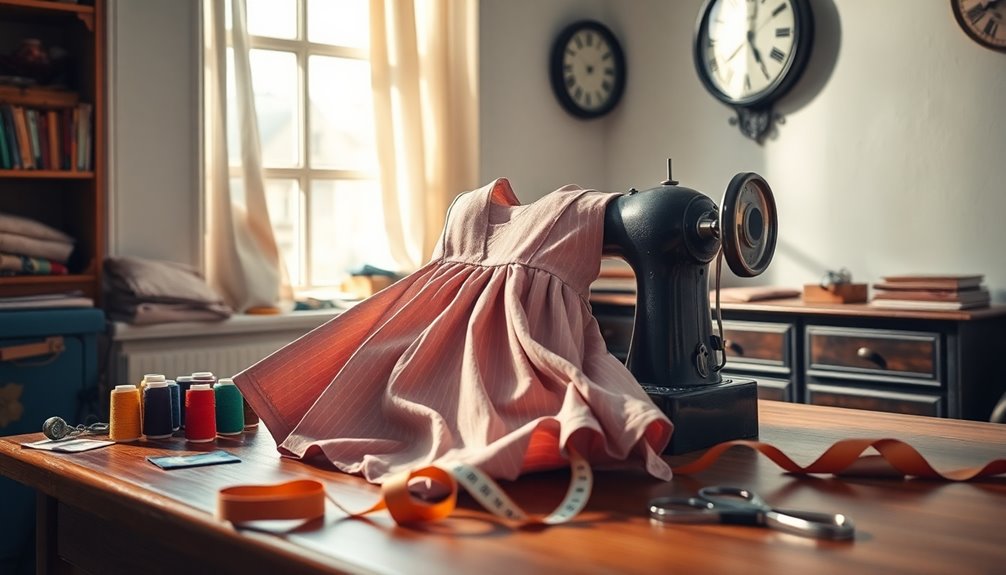
Several factors influence how long it takes to sew a dress, and understanding these can help you manage your time effectively.
The complexity of the pattern plays a significant role; intricate designs can take days, while simpler ones might be done in a day. Your choice of fabric also matters; jersey is beginner-friendly, but slippery materials can slow you down.
Mistakes, like needing to unpick seams, add extra time, too. Additionally, your individual sewing speed varies based on experience, and distractions or fitting adjustments can extend the process.
- Complexity of the dress design
- Choice of fabric
- Mistakes during sewing
- Individual sewing speed
- Distractions and fitting adjustments
Sewing Time Estimates for Different Skill Levels
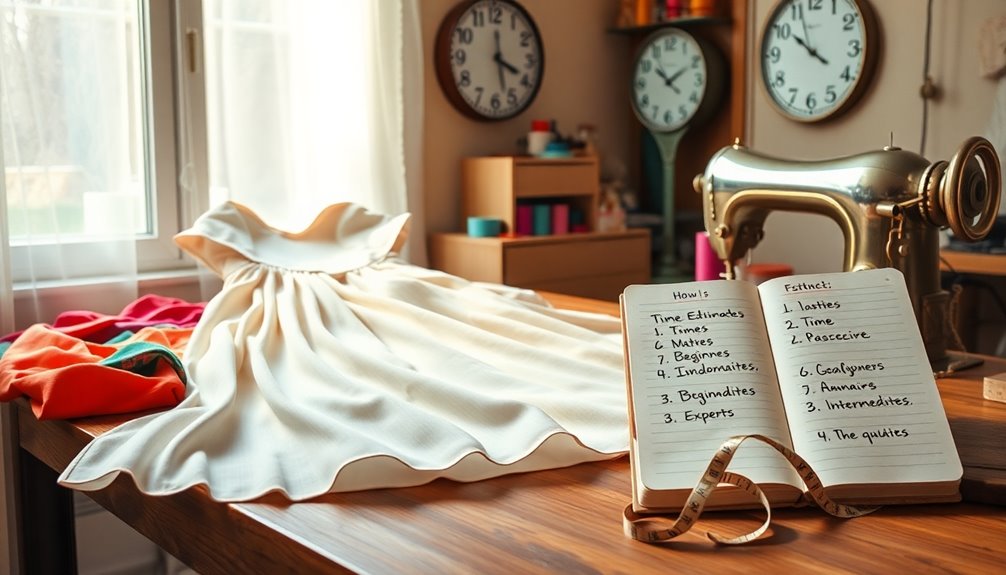
When you're just starting out, you might find that sewing a simple dress takes around 12 hours.
As you gain experience, that time can shrink to about 5 to 6 hours for seasoned sewers.
Understanding these timeframes helps you set realistic expectations for your projects.
Beginner Sewing Timeframes
For beginners, sewing a dress can be a rewarding yet time-consuming endeavor, typically taking around 12 hours for a simple design.
You'll spend at least an hour just laying out the pattern and cutting the fabric. As you gain experience, your speed will likely improve, but it's important to remember that the complexity of your chosen design can greatly affect the time required.
Here are some factors to take into account:
- Ruffles and intricate details can extend sewing time.
- Perfectionism may lead to slower progress.
- Time spent unpicking errors adds to the overall duration.
- Pressing seams is a vital step.
- Familiarity with tools enhances efficiency.
Embrace the journey as you learn to sew a dress!
Experienced Sewer Efficiency
As you progress in your sewing journey, you'll notice that your efficiency increases considerably.
Experienced sewers can typically complete a simple dress in just 6 to 8 hours, compared to the 12 hours beginners often take. Your familiarity with techniques and fabric types will help you cut and stitch more swiftly. Mastering tools like rotary cutters and specific sewing machine settings further streamlines the process.
While beginners might spend up to three days on intricate designs, you can tackle similar projects in just 1 to 2 days with your refined skills. With each project, your speed improves, allowing you to finish dresses faster than when you started.
For more tips, check out a sewing book tailored for advanced techniques!
The Importance of Fabric Choice
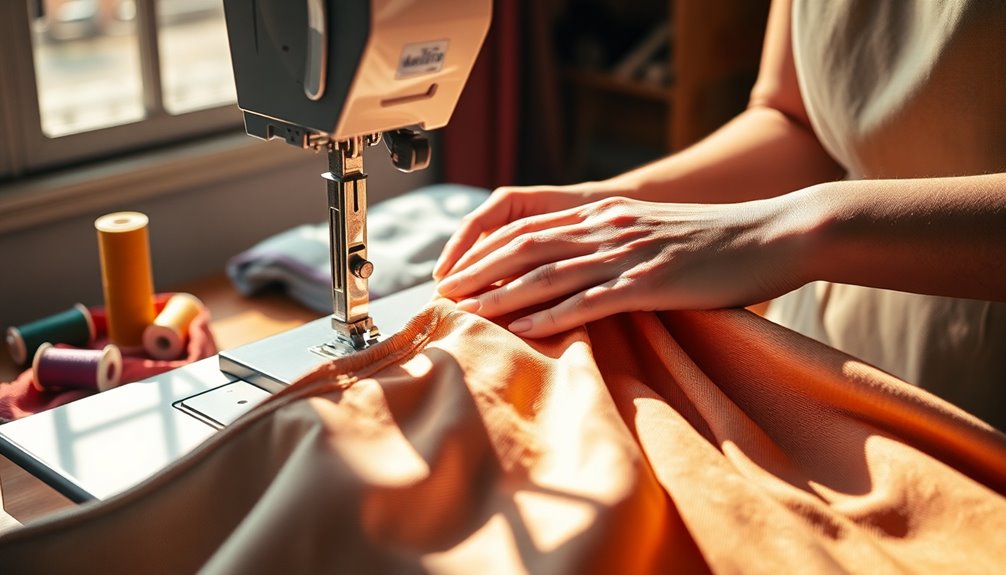
Choosing the right fabric is essential because it can greatly influence both the sewing process and the final outcome of your dress.
A smart fabric choice not only affects how quickly you can sew but also how the dress looks and feels. Here are some key points to evaluate:
- Lightweight, tightly woven fabrics like cotton are easier to handle.
- Jersey fabric is forgiving and stretches, ideal for beginners.
- Fabrics with higher stretch reduce alteration time.
- Heavier fabrics might require more support and finishing techniques.
- Proper fabric choice minimizes errors, streamlining your sewing process.
Time-Saving Tips for Beginners
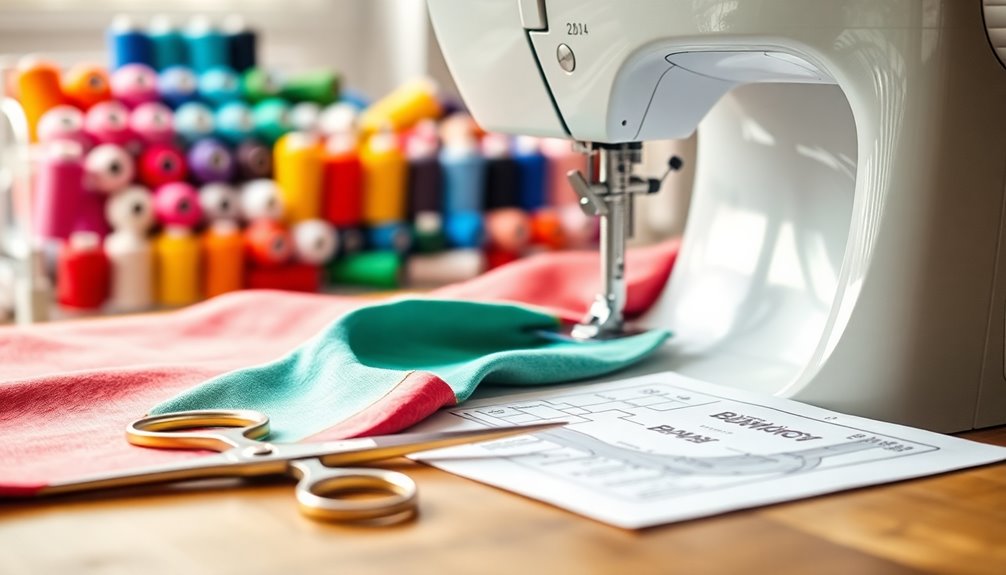
While diving into sewing your first dress, you'll want to prioritize efficiency to keep the experience enjoyable.
Start by choosing simple designs without intricate details; this can help you complete a dress in about one day. Use a fitted t-shirt as your template, which speeds up the cutting process to roughly one hour since you won’t need to cut patterns. When selecting fabric, opt for materials that are easy to work with, like cotton, as they allow for smoother sewing and neater finishes. Additionally, be sure to plan ahead by learning how to calculate fat quarters needed, which will ensure you have enough fabric without excess waste. This preparation will keep your project efficient and enjoyable, making it perfect for beginner sewists looking to build their skills.
Opt for jersey fabric—it's beginner-friendly and minimizes mistakes. Familiarize yourself with your sewing machine settings beforehand to avoid time-consuming adjustments during assembly.
Finally, keep a well-organized sewing area and gather all necessary materials before you start. This way, you can focus on your dress without distractions, making the entire process smoother and more enjoyable. Additionally, incorporating protective styling benefits from crochet techniques can enhance your overall crafting experience.
Common Challenges in Dressmaking
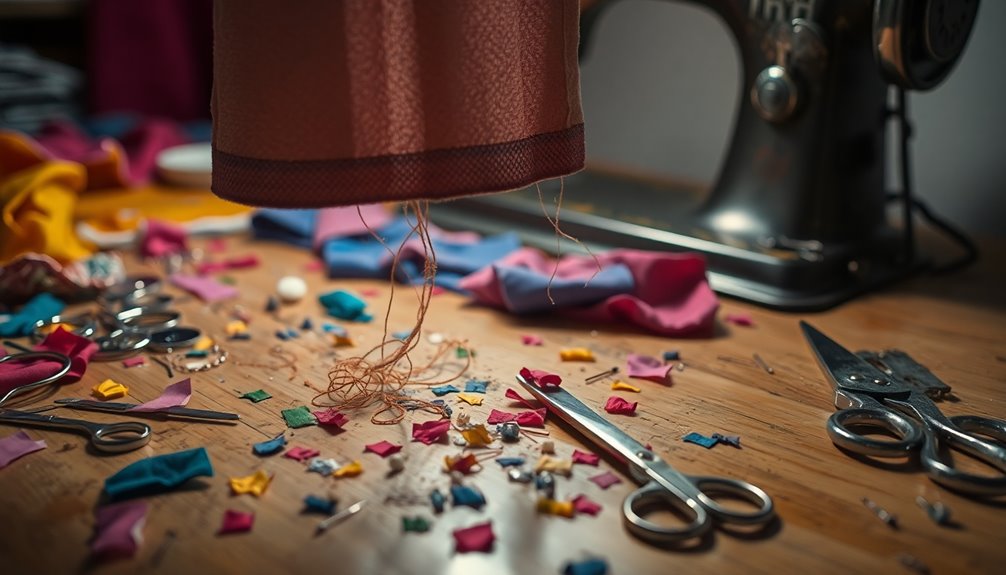
Steering through the world of dressmaking can be challenging, especially when you encounter common obstacles that can hinder your progress.
These challenges can considerably affect how long it takes to complete your dress.
- Perfectionism can slow you down as you aim for flawlessness.
- Mistakes often require unpicking, adding extra time to your project.
- New techniques or complex designs introduce learning curves, extending the time needed.
- Distractions during sewing sessions can lead to slower progress.
- The complexity of designs, like ruffles or intricate stitching, greatly increases sewing time.
Hand Sewing vs. Machine Sewing
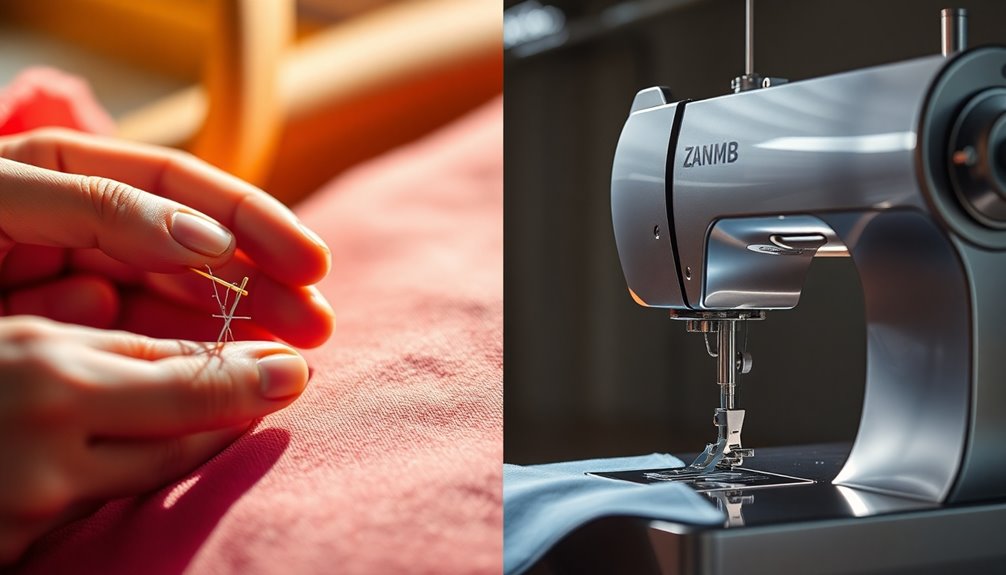
When it comes to sewing a dress, you'll find that the choice between hand sewing and machine sewing can greatly impact both the time it takes to finish and the overall experience.
Hand sewing can take up to ten times longer, especially for complex designs. While it offers a unique craftsmanship experience and may be satisfying, it's often impractical for intricate details like zippers.
If you're working with jersey fabric, machine sewing is usually the way to go, as it allows for faster and neater seams. Techniques like running and back stitches can work for simpler patterns, but mastering neat hems requires patience.
Ultimately, if speed and efficiency matter, a sewing machine is your best bet for dressmaking projects.
Realistic Timeframes for Dressmaking Projects
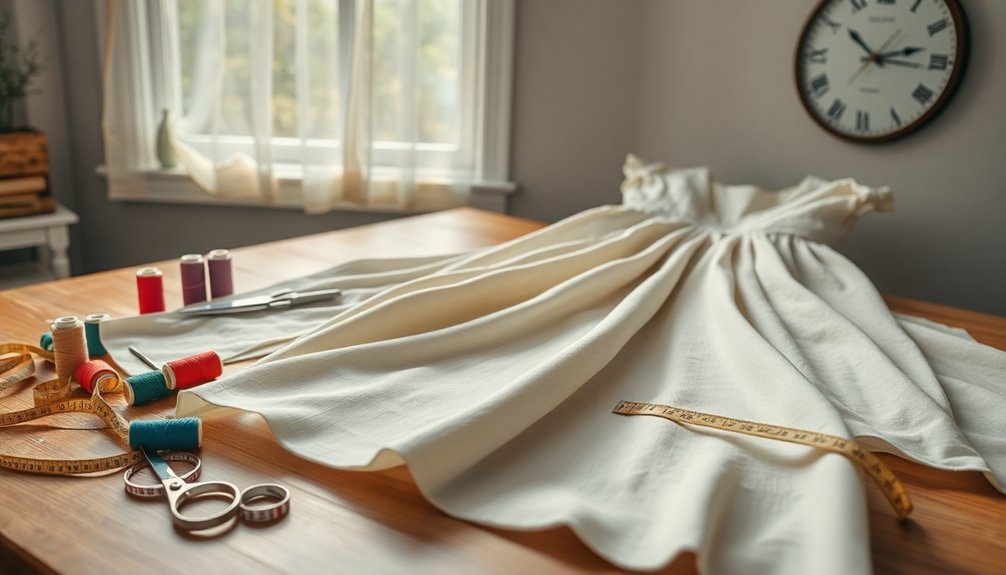
When you start a dressmaking project, it's important to contemplate various factors that can affect your sewing time.
Your experience level plays a big role; beginners might take longer than seasoned sewers who can work more efficiently.
Additionally, the complexity of your design and any distractions can greatly impact how long it takes to complete your dress.
Factors Affecting Sewing Time
Although many factors influence how long it takes to sew a dress, the complexity of the design plays an essential role in determining your timeline.
When you make a dress, consider these factors that can affect your sewing time:
- The intricacy of the pattern and details
- Your sewing speed and experience level
- The type of fabric used
- Time spent on unpicking mistakes
- The need for pressing seams throughout the process
For a simple dress using a fitted t-shirt template, you might complete it in a day.
However, more complex designs with ruffles or layers can extend the sewing duration considerably, sometimes requiring around 12 hours from cutting to finishing.
Beginner vs. Experienced Sewers
While beginners often find themselves spending considerably more time on dressmaking than experienced sewers, the differences in sewing time can be quite striking.
A beginner might take around 12 hours to sew a simple dress, factoring in unpicking mistakes and pressing. On the other hand, experienced sewers can finish similar projects in just 3 to 4 hours, thanks to their familiarity with techniques and efficient handling of the paper pattern.
Additionally, beginners may require extra time for pattern preparation and fabric layout, easily adding another hour.
As you gain experience, you'll notice your speed improves, allowing you to tackle more intricate designs with confidence and efficiency.
The Role of Design Complexity
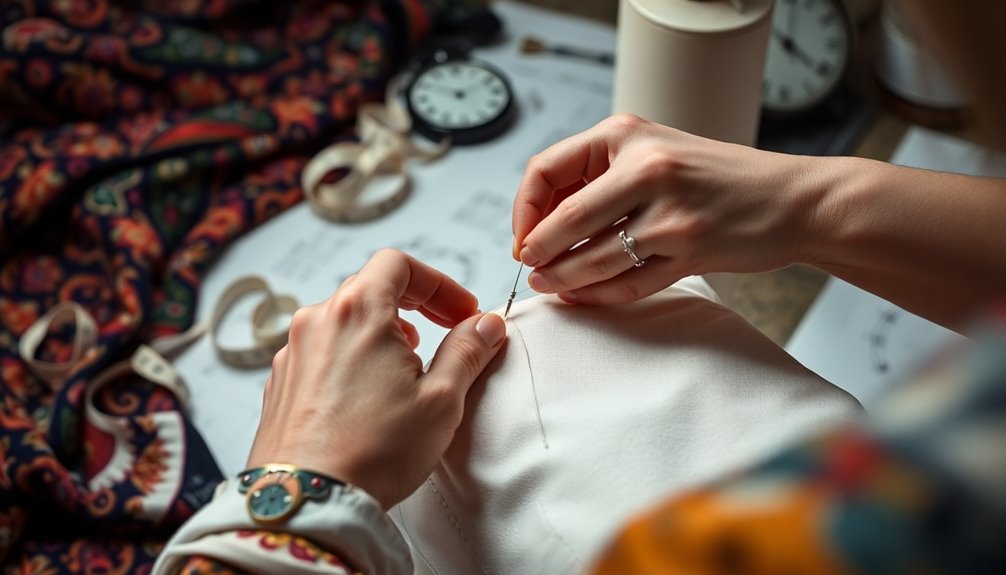
Design complexity plays an essential role in determining how long it takes to sew a dress. When you consider the design's intricacy, the time can vary greatly. Simple styles might take around three days, while elaborate designs could require up to 12 hours of sewing alone.
Keep in mind these factors that contribute to sewing duration:
- Ruffles and additional layers
- Set-in sleeves and unique closures
- Intricate stitching techniques
- Fitting adjustments for precision
- Your individual sewing speed and experience
As you navigate through these design elements, remember that adding two folds can enhance complexity, demanding more focus and time.
Balancing creativity with practicality is key to managing your sewing timeline effectively.
Encouragement for New Sewers
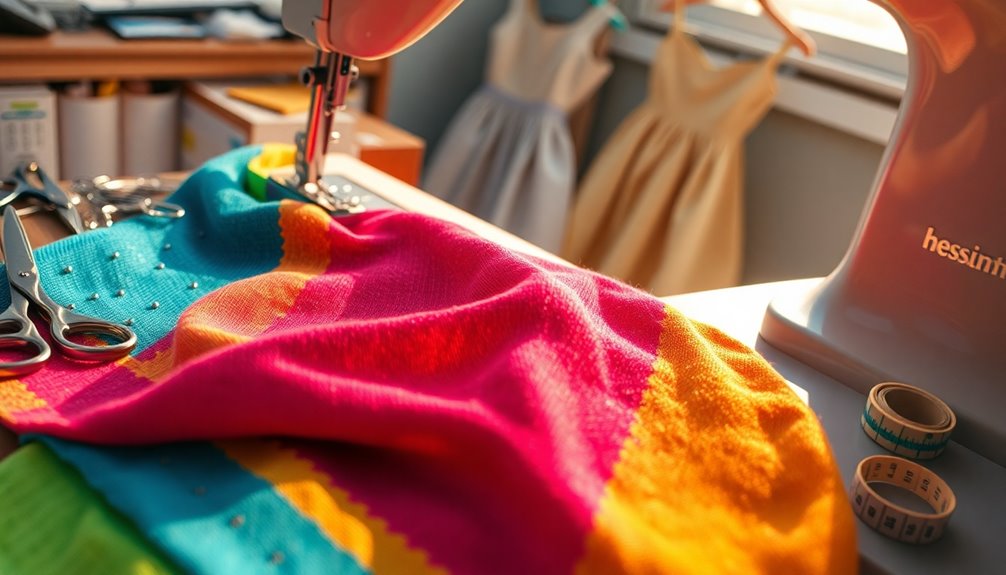
Sewing can be a rewarding journey filled with creativity and self-discovery. As a new sewer, start with simple projects like a fitted t-shirt dress. It'll help you build confidence and skills without overwhelming you. You can expect to spend about a day on a basic dress, allowing for focused practice and a satisfying sense of accomplishment. Remember, your sewing speed will improve with experience, so don't be discouraged if your first project takes longer. Joining online communities offers valuable encouragement for new sewers, connecting you with others who share your passion. Additionally, experimenting with different fabrics can enhance your sewing skills and provide a better understanding of handling materials. Finally, celebrate your small milestones; each completed project enhances your skills and sparks your creativity. Enjoy the journey, and keep pushing yourself!
Frequently Asked Questions
How Long Does It Usually Take to Sew a Dress?
When tackling a sewing project, the time it takes can vary widely based on complexity and your skill level.
Generally, simple designs might take around 12 hours, while beginner-friendly patterns can be completed in a day.
If you're working on intricate styles, like those with ruffles, expect to spend three days or more.
Don't forget to factor in time for mistakes and pressing seams, as those can add considerably to your total.
How Long Does It Take a Seamstress to Take in a Dress?
When you're considering getting a dress taken in, it's good to know that the time it takes can vary.
Typically, simple alterations might take around 30 to 45 minutes, while more complex changes could stretch to an hour or two.
The skill of the seamstress plays a big role, too. If they're experienced, you'll likely see quicker results.
How Long Does It Take to Get a Dress Made?
When you're getting a dress made, the timeline can really vary. If you choose a simple design, it might only take a few days.
However, for more elaborate styles with detailed elements, you could be looking at a week or more.
Your chosen tailor's experience, the complexity of the design, and any adjustments you need can all influence how long it'll take before you can wear that beautiful new dress.
How Long Will It Take for a Tailor to Stitch a Dress?
When you ask how long a tailor will take to stitch a dress, it really depends on the design's complexity.
A simple dress might only take 3 to 5 hours, while intricate designs with ruffles or embellishments could stretch to 12 to 20 hours.
If you need fitting adjustments, that'll add more time too.
Conclusion
So, how long will it take you to sew that dress? It really depends on your skills, the fabric you choose, and the complexity of your design. But don't let that intimidate you! Imagine the satisfaction of creating something beautiful with your own hands. With a little practice and the right tips, you might just surprise yourself with how quickly you can finish. Ready to plunge into and discover what you're truly capable of? Your dress awaits!
